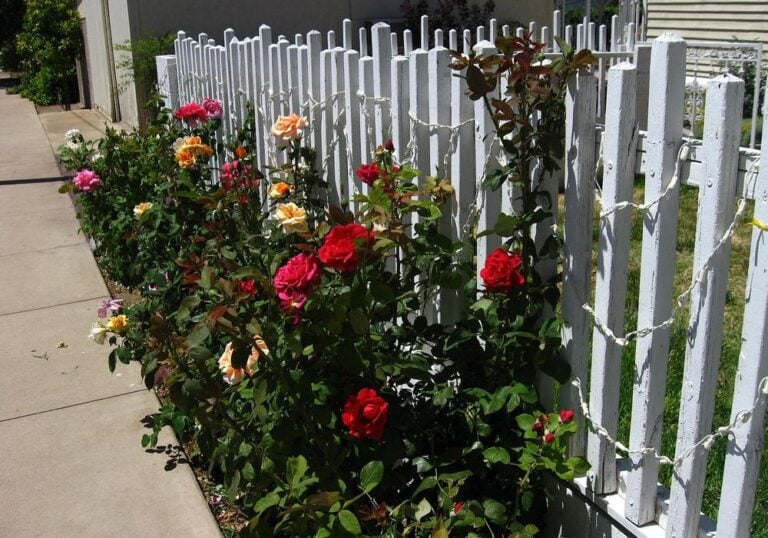Tame the Dryest Lawns with the Best Grass for Sandy Soil
Our recommendations for the best grass for sandy soil are Scotts Snap Pac Tall Fescue Grass Seed and the Dirty Gardener Majestic Turf Bermuda Grass. Sandy soils are the proverbial double-edged sword. While they drain quickly, they also cannot store nutrients well. Keep reading for a longer list of some fantastic options for sandy soil grasses.
Our Top Picks for the Best Grass for Sandy Soil
[wptb id="8270" not found ]What You Need to Know about Soil
Scientists describe soils by their general features that include structure, organic matter, pH, and permeability. Sand is one class of soil texture. Based on the diameter of its particles, it is classified as very coarse sand, coarse sand, medium sand, fine sand, or very fine sand. Sandy soils are the end product of the weathering and decomposition of rocks over time.
The parent material or the source of the weathered rock determines the mineral component of any soil. For sandy soils, that often means quartz, feldspar, or calcium carbonate. The mineral composition can, in turn, influence the soil chemistry and thus, the types of grasses that will thrive in a particular soil type. The same can be said of any soil type.
How Texture Influence Grasses
The texture is the mix of gravel, clay, silt, coarse sand and fine sand that gives a soil its basic look and feel. It directly influences how water and nutrients move through it. Drainage increases with the particle size because there is more room for water to move. It will also influence your choice of a grass. For example, Kentucky bluegrass won’t do well in clay or compacted soils.
Water and Nutrient Movement
Infiltration and permeability are characteristics that define how plants are able to get water and nutrients from the soil. For water to move freely and infiltrate soils, they must be permeable and allow it to occur. It’s a big deal when it comes to grasses and other plants. Soils with low permeability can become waterlogged, which can increase the risk for harmful bacteria growth.
Sandy soils allow for free infiltration and nutrient movement. It’s one reason that golf courses often have these kinds of soils. It suits their purpose—as well as golfers—to keep water from pooling at the soil surface. So, a particular combination of soil type and grass can serve a myriad of functions that you can fine tune to your needs.
Characteristics of Sandy Soils
To determine the best grass for sandy soils, we can begin with its basic features as they may influence your grass choice. Generally, sandy soil drains well and fast. While that has some advantages, it also means that sandy soils don’t store water as well as clay types. Grasses that are drought intolerant may have trouble in these soils.
This video from Catalina Island Marine Institute explains the fascinating process of how sand is formed.
Sandy soils are also well aerated which supports healthy root growth. It is a boon for grasses that cannot tolerate heavy clay soils. However, it comes at a price. It is more difficult for these soils to hang onto organic matter and their nutrients, which can increase the maintenance requirements for grasses that prefer fertile soils.
On the plus side, you’ll find lighter sandy soils easier to work with whether you’re preparing a vegetable garden or planting a new lawn. While the coarser texture of these soils aids aeration, it also means that warm air can permeate the lower levels. That means that you may be able to plant earlier in the season with warmer soil temperatures that grasses need to germinate.
Choosing the Best Grass
There are two things you need to keep in mind when picking the best grass for sandy soils. First, remember that these soils drain rapidly. That means that they may dry out quickly. Second, you’ll have the best success with grasses that are drought tolerant. The combination of fast draining and drought means that your grass must have an excellent tolerance level.
Cool-Season Grasses versus Warm-Season Grasses
Sandy soils occur throughout the country even far from the beach. So it makes sense that the best grass depends on your location. Cool-season grasses are a suitable choice for northern areas below USDA Hardiness Zone 7. Extreme low temperatures for these regions go from 10 degrees Fahrenheit and below. As you may expect, these grasses have excellent cold tolerance.
Warm-season grasses, on the other hand, prefer the higher temperatures of more southerly regions. They are adapted to both heat and drought conditions. They don’t tolerate cold or shade well, which makes sense given their preferences. Drought tolerance in a grass is especially important when both of these factors come into play.
Both types of grasses have the ability to withstand drought to some degree. That becomes important when considering the long-term health of your lawn. A lawn that is stressed is at a greater risk for disease and pests. Warm-season grasses have a low tendency for disease. However, drought certainly isn’t the only factor that comes into play.
That also means that the best grass for sandy soils has to withstand a broad spectrum of environmental conditions. Cool-season grasses have a limited ability to handle heat, whereas the opposite is the case with warm-season species. Thus, our choice for the best grass for sandy soils has to cover both of these scenarios. Hence, we have both a cool and warm-season option.
Our Recommendations: Scotts Snap Pac Tall Fescue Grass Seed and Dirty Gardener Majestic Turf Bermuda Grass
When it comes to choosing the best grass, we quickly realized that we needed choice suited for both northern and southern regions of the country. Drought tolerance ranked as our primary criteria since fast-draining sandy soils would push the envelope on adaptation to these conditions. We settled for the best of both worlds for a suitable grass to meet your needs.
Scotts Snap Pac Tall Fescue Grass Seed offers a lot of the advantages you’ll get from a cool-season grass with suitable tolerance for a variety of environmental conditions. It can handle both the cold and heat as well as drought. It has lower moisture needs than other cool-season species which makes it a good fit for sandy soils. It also handles wear well.
We were torn between several types of warm-season grasses because all of them seemed well adapted to drought. We settled on Bermuda grass for its superior ability to handle dry conditions. The Dirty Gardener Majestic Turf Bermuda Grass offers a similar durable and wear resistance like tall fescue. Given the stress that drought can cause, we opted for this grass.
Sandy soils present a challenge to the home gardener. Their ability to drain water quickly applies to nutrients as well. The best grass for sandy soils needs to be one that can handle a wide array of environmental conditions. And to fulfill everyone’s need for a suitable grass, we picked both a warm and cool-season selection with an emphasis on excellent tolerance.
Photo by PublicDomainPictures licensed under CC0.



